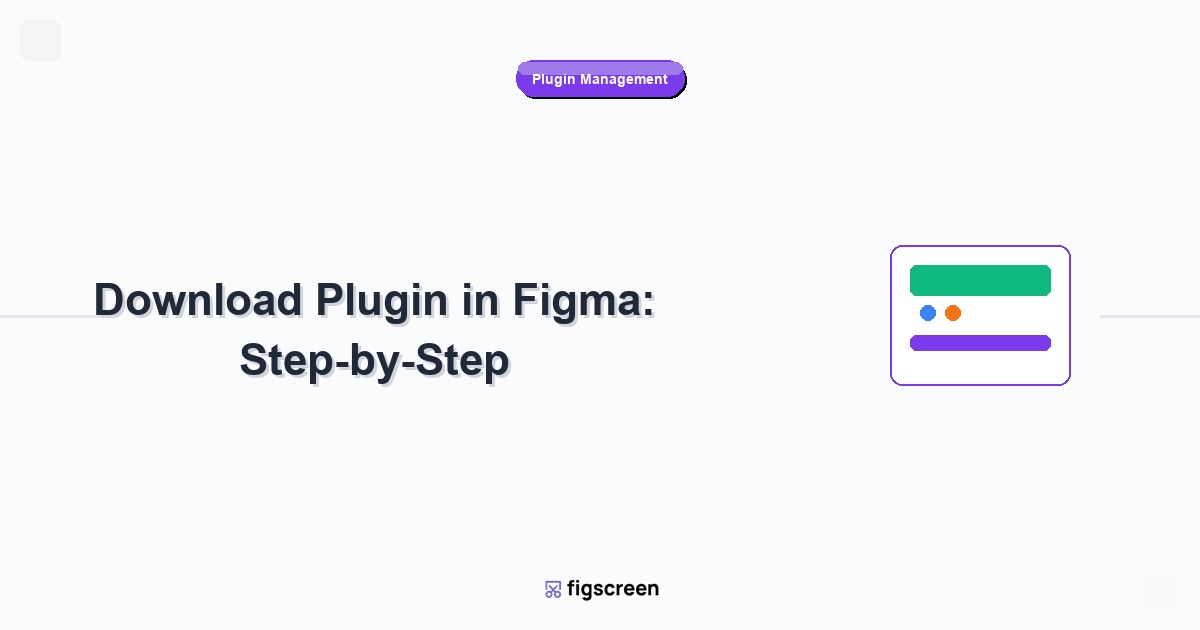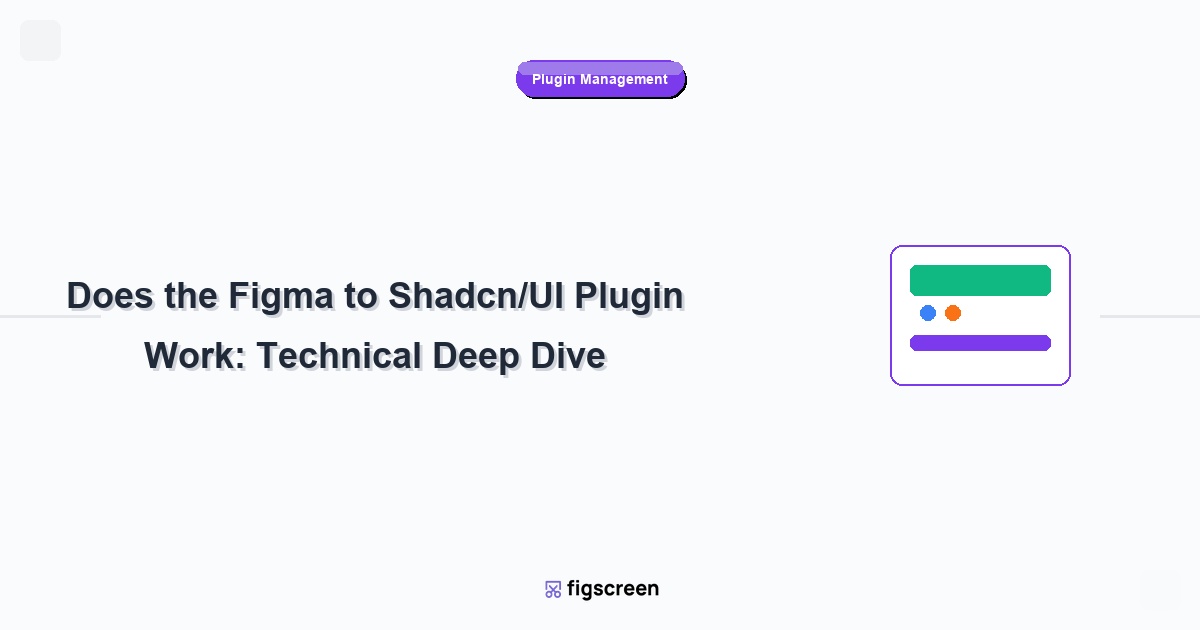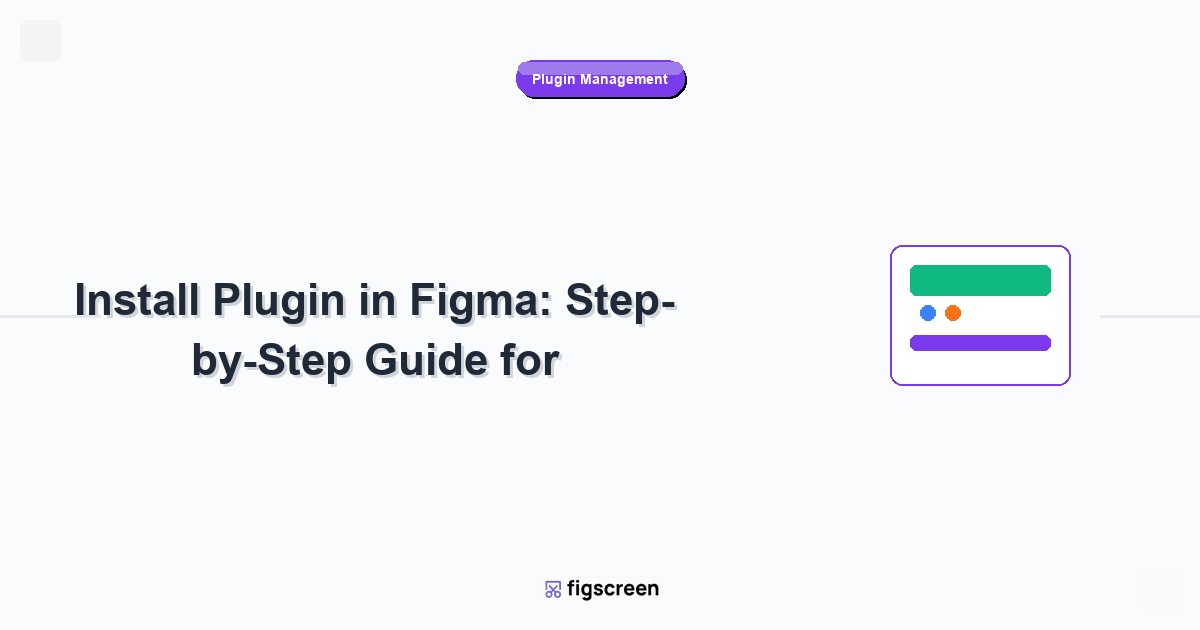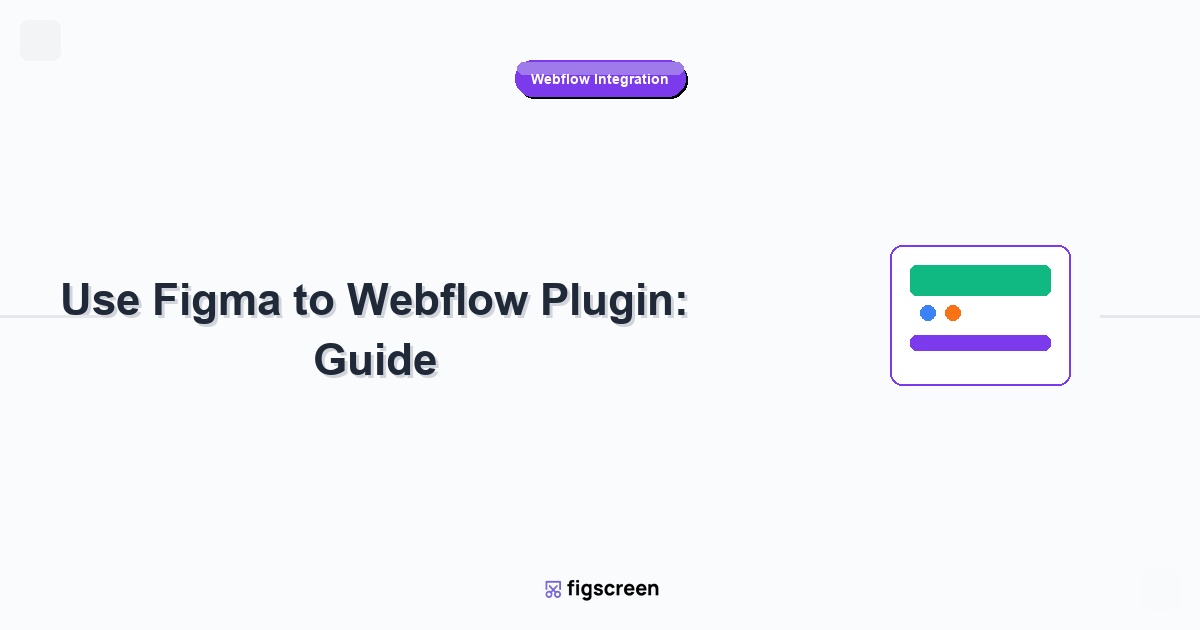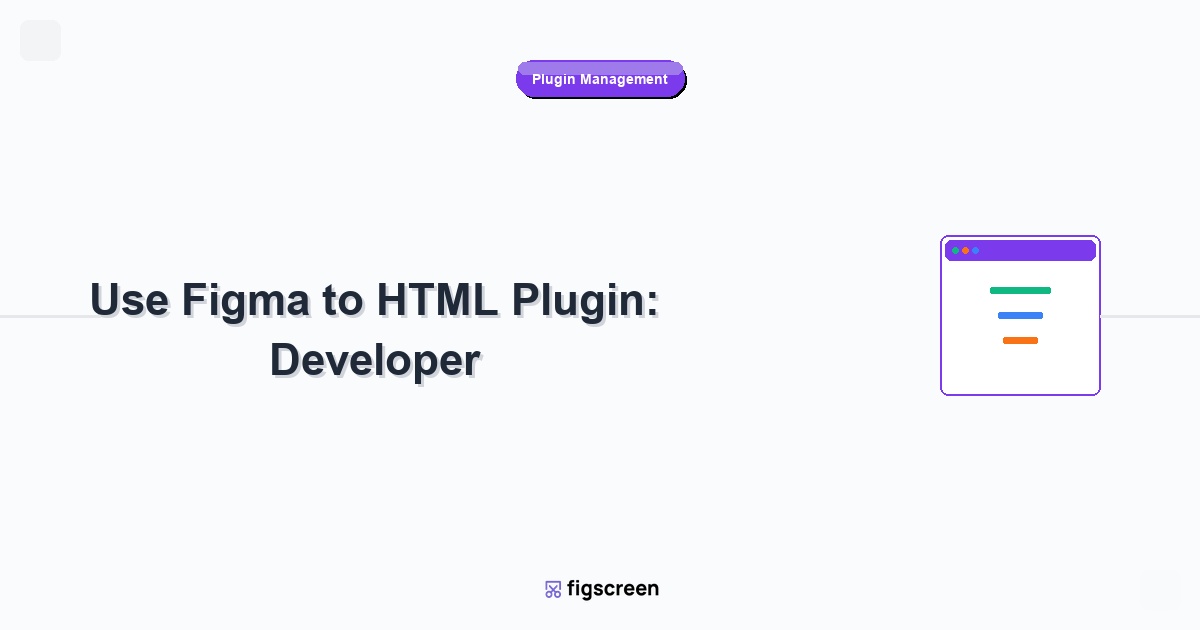Downloading plugins in Figma has been streamlined with the UI3 interface update, but the process involves more than just clicking “download.” Understanding the complete acquisition process—from discovery to verification—ensures you get the right tools for your workflow while maintaining security and performance. This guide walks you through every step of downloading plugins effectively in 2025.
Understanding Plugin “Download” vs “Install” in Figma
Before diving into the process, it’s important to understand the terminology:
- “Download” in Figma Context – The process of acquiring and installing a plugin from the Community
- No Separate Download Step – Unlike traditional software, Figma plugins install directly without manual file downloads
- Cloud-Based System – Plugins are delivered through Figma’s cloud infrastructure
- Instant Availability – Once “downloaded,” plugins are immediately ready to use
Step-by-Step Plugin Download Process
Method 1: Community Tab Download (Primary Method)
The most common way to download plugins is through Figma’s Community tab:
- Open Community Tab – Click the “Community” tab in the top-left navigation
- Search for Plugins – Use the search bar or browse categories
- Select “Plugins” Filter – Click on “Plugins” to see only plugin results
- Choose Your Plugin – Click on the plugin you want to download
- Review Plugin Details – Check description, reviews, and permissions
- Click “Install” – The blue “Install” button starts the download process
- Confirm Installation – The plugin is automatically added to your account
Method 2: Direct Plugin Links
You can also download plugins from direct links:
- Receive Plugin Link – Get a Figma Community plugin URL
- Open Link – Click the link to open the plugin page
- Sign In if Needed – Ensure you’re logged into your Figma account
- Click “Install” – Follow the same installation process
Method 3: In-App Plugin Discovery
Download plugins while working in Figma:
- Open Actions Menu – Click the Actions button (▶️) in the toolbar
- Select “Plugins” – Choose “Plugins” from the dropdown
- Click “Browse Community” – This opens the plugin browser
- Search and Install – Find and install plugins without leaving your file
Finding the Right Plugins to Download
Plugin Discovery Strategies
Effective ways to find plugins worth downloading:
- Search by Function – Use keywords like “export,” “icons,” or “wireframe”
- Browse Categories – Explore Figma’s curated plugin categories
- Check Popular Plugins – Look at most-downloaded and highest-rated options
- Read Recommendations – Follow design blogs and community recommendations
Evaluating Plugins Before Download
Before downloading, assess these factors:
- User Reviews – Read ratings and feedback from other users
- Download Count – Higher download numbers often indicate reliability
- Last Updated – Prefer recently updated plugins
- Developer Reputation – Check the developer’s other plugins and profile
- Permission Requirements – Review what data the plugin will access
Plugin Download Requirements and Compatibility
System Requirements
Ensure your setup supports plugin downloads:
- Figma Account – You need a valid Figma account (free or paid)
- Internet Connection – Required for downloading and running plugins
- Supported Browser – Chrome, Firefox, Safari, or Edge (latest versions)
- Desktop App – Figma desktop app (recommended for best performance)
Account Limitations
Understanding download limits and restrictions:
- Free Accounts – Can download and use most free plugins
- Paid Plugins – Some plugins require separate payment
- Team Restrictions – Some organizations may restrict plugin downloads
- Storage Limits – No practical limit on number of installed plugins
Plugin Download Security and Safety
Security Best Practices
Download plugins safely by following these guidelines:
- Verify Developer Identity – Check if the developer is verified or well-known
- Read Permission Details – Understand what access the plugin requires
- Check Recent Reviews – Look for any security concerns in recent feedback
- Start with Popular Plugins – Well-reviewed plugins are generally safer
Understanding Plugin Permissions
Before downloading, review what permissions the plugin requests:
- File Access – Can read and modify your design files
- Network Access – Can connect to external services
- User Information – May access your account details
- Team Data – Might access shared team information
Troubleshooting Plugin Download Issues
Common Download Problems
If you’re having trouble downloading plugins:
- Installation Button Doesn’t Work – Check internet connection and refresh page
- Plugin Doesn’t Appear – Clear browser cache and restart Figma
- Permission Errors – Ensure you’re logged into the correct account
- Network Timeouts – Try downloading during off-peak hours
Browser-Specific Issues
Different browsers may have unique issues:
- Chrome – Usually the most compatible, try this browser first
- Safari – May require enabling JavaScript and cookies
- Firefox – Check if Enhanced Tracking Protection is blocking downloads
- Edge – Ensure you’re using the latest Chromium-based version
Account and Team Issues
If downloads are blocked or restricted:
- Team Policies – Check with your team admin about plugin restrictions
- Account Status – Ensure your account is in good standing
- Regional Restrictions – Some plugins may not be available in all regions
- Payment Issues – For paid plugins, verify payment method
After Download: Plugin Verification and Setup
Confirming Successful Download
Verify your plugin downloaded correctly:
- Check Plugin Menu – Open Actions > Plugins to see your new plugin
- Test Basic Functionality – Run the plugin to ensure it works
- Review Plugin Interface – Familiarize yourself with the plugin’s UI
- Check for Updates – Ensure you have the latest version
Initial Plugin Configuration
Set up your newly downloaded plugin:
- Configure Settings – Adjust plugin preferences to match your workflow
- Connect External Services – Link APIs or accounts if required
- Test with Sample Data – Try the plugin with test content first
- Save Preferences – Ensure your settings are saved properly
Managing Downloaded Plugins
Organizing Your Plugin Library
Keep your downloaded plugins organized:
- Regular Reviews – Periodically assess which plugins you actually use
- Remove Unused Plugins – Uninstall plugins you haven’t used in months
- Update Regularly – Keep plugins updated for security and features
- Document Favorites – Keep a list of your essential plugins
Plugin Performance Monitoring
Monitor how downloaded plugins affect your Figma experience:
- Loading Speed – Notice if plugins slow down Figma startup
- Memory Usage – Be aware of plugins that use significant resources
- Stability Issues – Remove plugins that cause crashes or errors
- Feature Conflicts – Watch for plugins that interfere with each other
Advanced Plugin Download Strategies
Building a Curated Plugin Collection
Create a strategic approach to plugin downloads:
- Identify Workflow Gaps – Determine what functionality you’re missing
- Research Solutions – Find plugins that address specific needs
- Test Before Committing – Try plugins on non-critical projects first
- Gradually Build Library – Add plugins slowly to avoid overwhelm
Team Plugin Coordination
When downloading plugins for team use:
- Coordinate with Team – Ensure everyone downloads the same plugins
- Document Plugin List – Maintain a shared list of approved plugins
- Test Team Compatibility – Verify plugins work across different team workflows
- Plan Training – Help team members learn new plugin workflows
Future Plugin Download Considerations
Staying Current with Plugin Ecosystem
Keep your plugin strategy up-to-date:
- Follow Plugin Developers – Stay informed about updates and new releases
- Monitor Community Trends – Watch for emerging plugin categories
- Participate in Beta Programs – Test new plugins before public release
- Share Discoveries – Recommend good plugins to the community
Evolution of Plugin Download Process
Prepare for changes in how plugins are downloaded:
- Interface Updates – Figma may change the download interface
- New Distribution Methods – Alternative ways to acquire plugins may emerge
- Enhanced Security – Expect more sophisticated security measures
- Better Discovery – Improved tools for finding relevant plugins
Conclusion
Downloading plugins in Figma is a straightforward process, but doing it effectively requires strategy and attention to detail. By understanding the download process, evaluating plugins carefully, and managing your plugin library thoughtfully, you can build a powerful toolkit that enhances your design workflow without compromising security or performance.
Remember that the goal isn’t to download as many plugins as possible, but to curate a collection that truly improves your productivity and design quality. Start with well-reviewed plugins that address your immediate needs, then gradually expand your toolkit as you identify new opportunities for workflow improvement.
Download Your Next Essential Plugin
Figscreen is trusted by thousands of designers for capturing perfect website screenshots directly in Figma. Join the community and download the plugin that streamlines your research and inspiration workflow.
